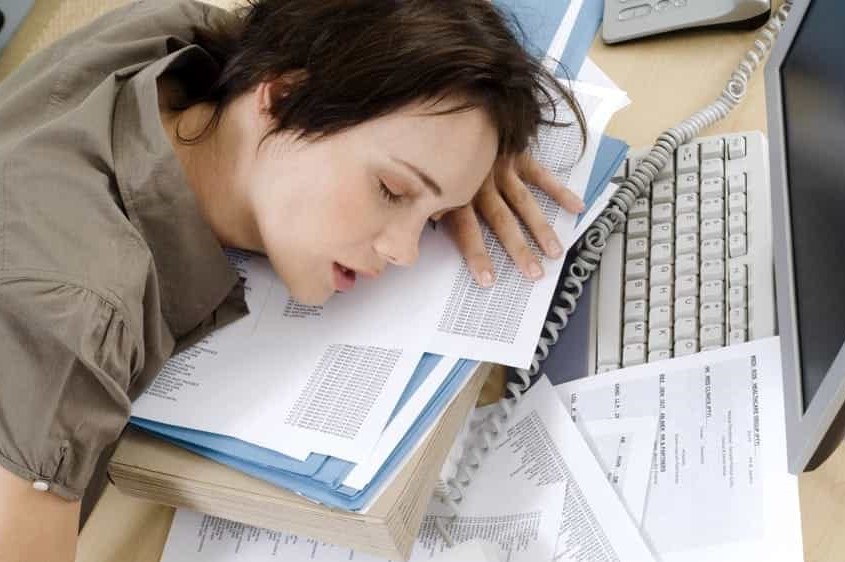
Post-traumatic hypersomnia: causes, symptoms, diagnosis, therapy
In medicine, hypersomnia refers to a group of several neurological sleep disorders characterised by excessive daytime sleepiness, which causes hypersomniacs to be unable to maintain an adequate level of alertness throughout the day and to experience sudden and uncontrollable sleep situations that force them to fall asleep at unusual times, e.g. during a conversation, a meal, while working or even while driving
The hypersomniac generally falls asleep very easily and wakes up with great difficulty.
Depending on the type of hypersomnia, daytime naps may be longer or shorter and more or less restorative: e.g. in narcolepsy, daytime naps tend to be short (a few minutes) and restorative, whereas in idiopathic hypersomnia they are on the contrary longer (even hours) and not restorative.
Secondary hypersomnia
Secondary hypersomnias refer to a specific type of hypersomnia syndromes for the etiopathogenesis of which an organic, toxic or psychic cause has been identified, as opposed to primary hypersomnias where the etiopathogenesis is not known or does not yet appear completely clear, as in the case of idiopathic hypersomnia or primary recurrent hypersomnia (Kleine-Levin syndrome).
The most common secondary hypersomnias include those related to psychiatric illnesses, post-traumatic hypersomnia and obstructive sleep apnea syndrome.
Post-traumatic hypersomnia (secondary sleepiness)
Post-traumatic hypersomnia, or secondary somnolence, is a disorder characterised by excessive sleepiness that can occur following a traumatic event involving the central nervous system.
Symptoms and signs of hypersomnia
In patients who have suffered a head injury, hypersomnia can frequently develop in the period immediately following the trauma itself, associated with headache, fatigability, memory disturbances (post-traumatic encephalopathy).
Patients present numerous episodes of daytime sleep, characterised by NREM sleep.
Recent data, however, seem to indicate that in the hospitalisation period immediately following the trauma, patients complain more often of sleep onset and sleep maintenance disorders, i.e. insomnia.
In the following months, on the contrary, sleepiness becomes the prevalent condition.
Patients who complain of sleep disturbances after the trauma, and especially hypersomnia, are those who are most seriously affected by the head injury on the behavioural, social and, in particular, work level: these subjects develop anxiety, depression, are often apathetic and have difficulty communicating and reintegrating into the world of work.
In most cases, the symptoms tend to resolve spontaneously in the months following the traumatic event; more rarely, excessive sleepiness sets in, with a progressive course, 12-18 months later.
Polysomnographic picture
Polysomnographic data on these patients are meagre and poorly specific.
Nocturnal sleep time is usually modestly increased and the MSL T shows an abnormal tendency to fall asleep during the day, with sleep latency values of less than 10 minutes.
However, no REM sleep phases are evident shortly after sleep onset (SOREMPs, typical of narcolepsy).
In some cases no alteration in sleep pattern is objectively documentable: it is possible that these patients present with daytime episodes of microsleep or that the reported hypersomnia is the expression of a disorder of psychiatric origin or compensation neurosis.
Laboratory examinations
Neuroradiological investigations (CT, MRI) allow focal lesions of the brain parenchyma to be detected.
Sometimes sleep attacks must be placed in differential diagnosis with post-traumatic epilepsy; electroencephalography can be of help in these circumstances.
Evolution
In some cases, hypersomnia arises shortly after the trauma and resolves spontaneously within a few weeks or months.
It may happen that hypersomnia persists for a long time and worsens with the passage of time.
This occurs during severe head injuries associated with neurological deficits or a prolonged state of post-traumatic coma.
Hypersomnia, causes and risk factors
Post-traumatic hypersomnia is caused by brain trauma of various kinds, such as traffic accidents, falls or sports injuries.
Hyperosnnia appears to be related to the site, rather than the mechanism, of the head injury. The injury sites most often associated with this disorder are:
- posterior hypothalamus;
- pineal region;
- posterior cranial fossa.
Hypothalamic lesions may be associated with eating and sexual behaviour disorders (bulimia, hypersexuality), leading to post-traumatic Kleine-Levin syndrome.
These cases, like all those associated with specific brain injury sites, have a less good prognosis.
The few cases that have undergone neuropathological findings have not made it possible to establish definite anatomo-clinical relationships between drowsiness and brain injury.
Frequently, drowsy patients present diffuse lesions in the trunk, cerebral cortex and diencephalon.
It should be noted that some patients, particularly those who have suffered ‘whiplash’ trauma, may present with daytime sleepiness due to the onset of sleep-related breathing disorders.
In these cases, however, the prognosis is favourable.
Differential diagnosis
In patients with a positive history of head trauma, other possible causes of daytime hypersomnia must be considered and ruled out before the diagnosis of post-traumatic hypersomnia is made: hydrocephalus, atlanto-occipital dislocations, subdural haematomas or hygromas, arachnoid cysts, and post-traumatic epileptic seizures, which can mimic a sleep attack.
The possibility of the onset of chronic meningitis should also be considered.
These clinical conditions should be placed in differential diagnosis especially when the sleep disorder has a progressively worsening course.
Narcolepsy can be easily distinguished from post-traumatic hypersomnia by the presence of REM sleep episodes.
Non-pharmacological therapy
No treatment other than symptomatic pharmacological treatment is possible; however, observing good sleep hygiene may be useful.
Pharmacological therapy
Psychostimulant drugs (methylphenidate and pemoline) are used.
Read Also:
Emergency Live Even More…Live: Download The New Free App Of Your Newspaper For IOS And Android
Obstructive Sleep Apnoea: What It Is And How To Treat It
Grinding Your Teeth While You Sleep: Symptoms And Remedies For Bruxism
Long Covid And Insomnia: ‘Sleep Disturbances And Fatigue After Infection’
Sleep Disorders: The Signs Not To Be Underestimated
Sleepwalking: What It Is, What Symptoms It Has And How To Treat It
What Are The Causes Of Sleepwalking?
Obstructive Sleep Apnoea: Symptoms And Treatment For Obstructive Sleep Apnoea
What Insomnia Do You Suffer From? The Five Most Frequent Complaints Under The Covers
Rare Diseases: Positive Results Of A Phase 3 Study For The Treatment Of Idiopathic Hypersomnia



